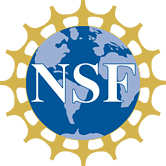 PI and Co-PIs
PI and Co-PIs
Bei Wang (PI)Assistant Professor
School of Computing and Scientific Computing and Imaging Institute
University of Utah
beiwang AT sci.utah.edu
http://www.sci.utah.edu/~beiwang
Carlos Scheidegger (Co-PI)
Assistant Professor
Department of Computer Science
University of Arizona
cscheid AT email.arizona.edu
https://cscheid.net/
Paul Rosen (Co-PI)
Assistant Professor
Computer Science and Engineering
University of South Florida
prosen AT usf.edu
http://www.cspaul.com/wordpress/
Full Project Site
Overview
This project leverages topological methods to develop a new class of data analysis and visualization techniques to understand the structure of networks. Networks are often used in modeling social, biological and technological systems, and capturing relationships among individuals, businesses, and genomic entities. Understanding such large, complex data sources is highly relevant and important in application areas including brain connectomics, epidemiology, law enforcement, public policy and marketing. The proposed research will be evaluated over multiple data sources, including but not limited to large social, communication and brain network datasets. Furthermore, the new approaches developed in this project will be integrated into growing data analysis curricula, shared through developing workshops, and used as topics to continue attracting underrepresented groups into STEM fields and computer science specifically.The scientific challenges this project addresses are two-fold: how to use topology to extract features from the data; and how to design effective visualizations to communicate these features to domain experts and decision makers. Topological techniques central to this project provide a strong theoretical basis for simplifying and summarizing complex data while still preserving critical underlying structures. They also provide a basis for task-oriented designs that allow us to control the volume of data to be displayed in visualizations, so users can develop faithful mental models of the data, facilitating information discovery. This project focuses on two research agendas. First, it proposes a rich body of topological summarization techniques to extract and preserve important topological features within large-scale graph-structured networks, and to obtain compact and hierarchical representations that are suitable for visual exploration. The feature extracting process captures complex interactions in the system, describes features at all scales, is robust with respect to noise, and has efficient computation. Second, this project proposes designing visualizations that encode the extracted topological structures explicitly, focusing on investigating techniques to fully exploit their properties in the visual metaphors to be developed. This project web site provides additional information and will include access to developed tools and test data sets.
